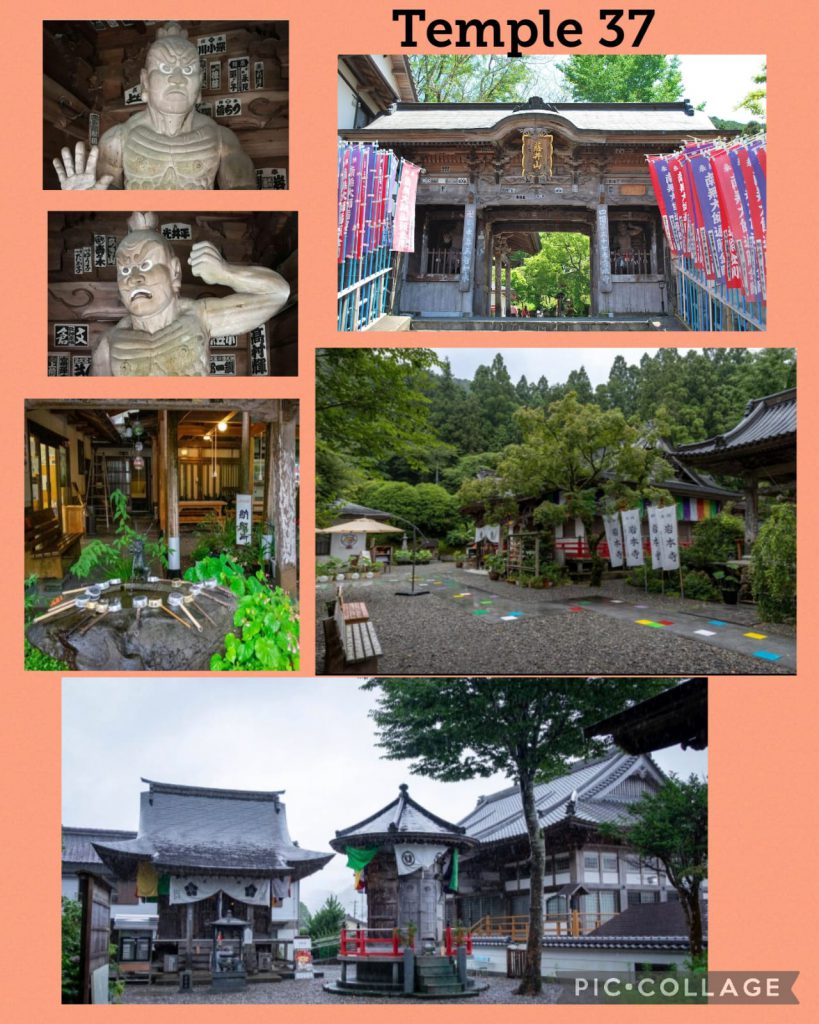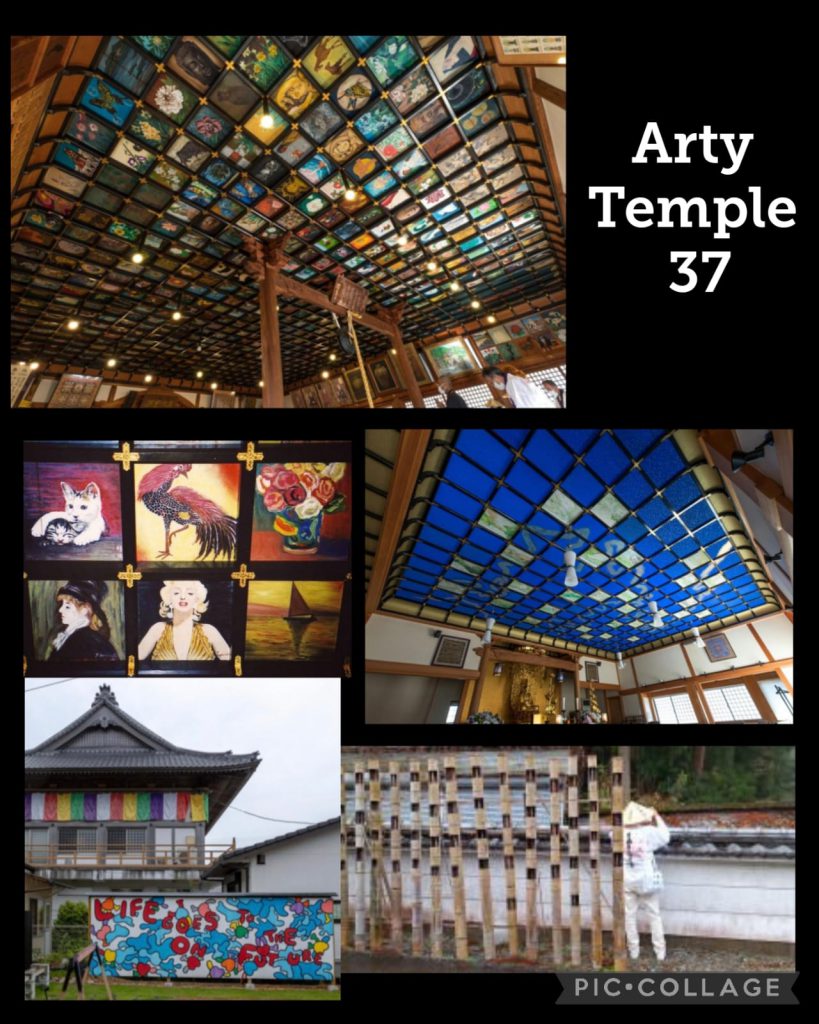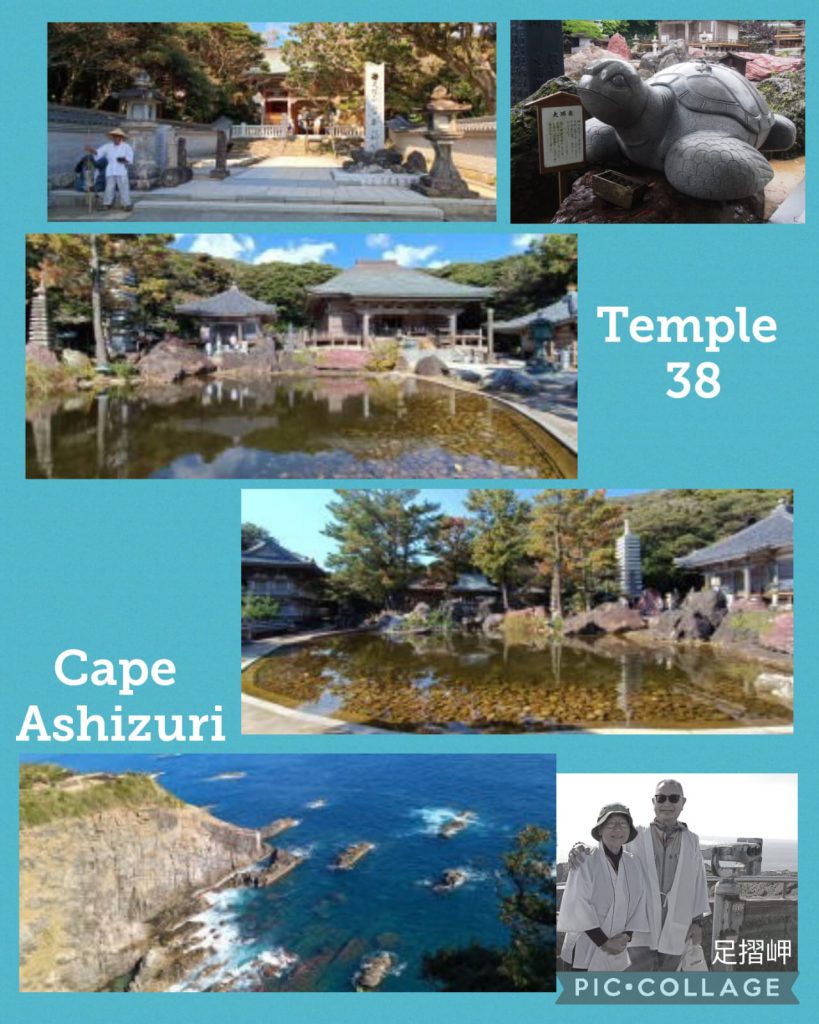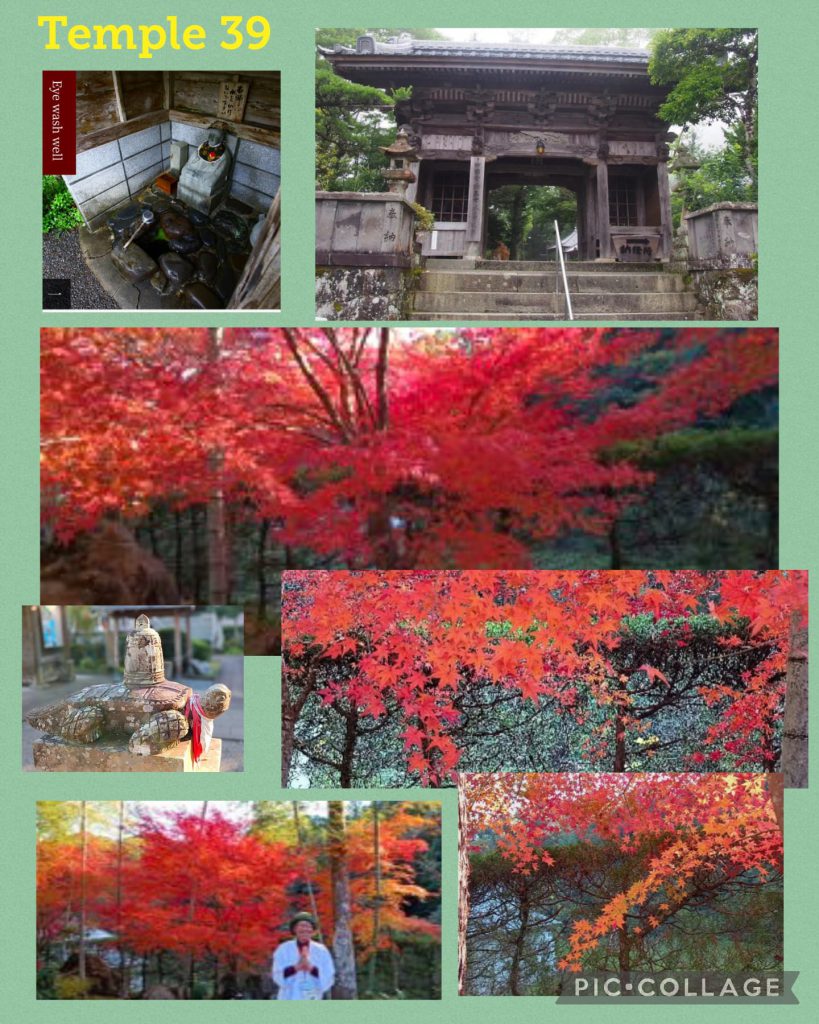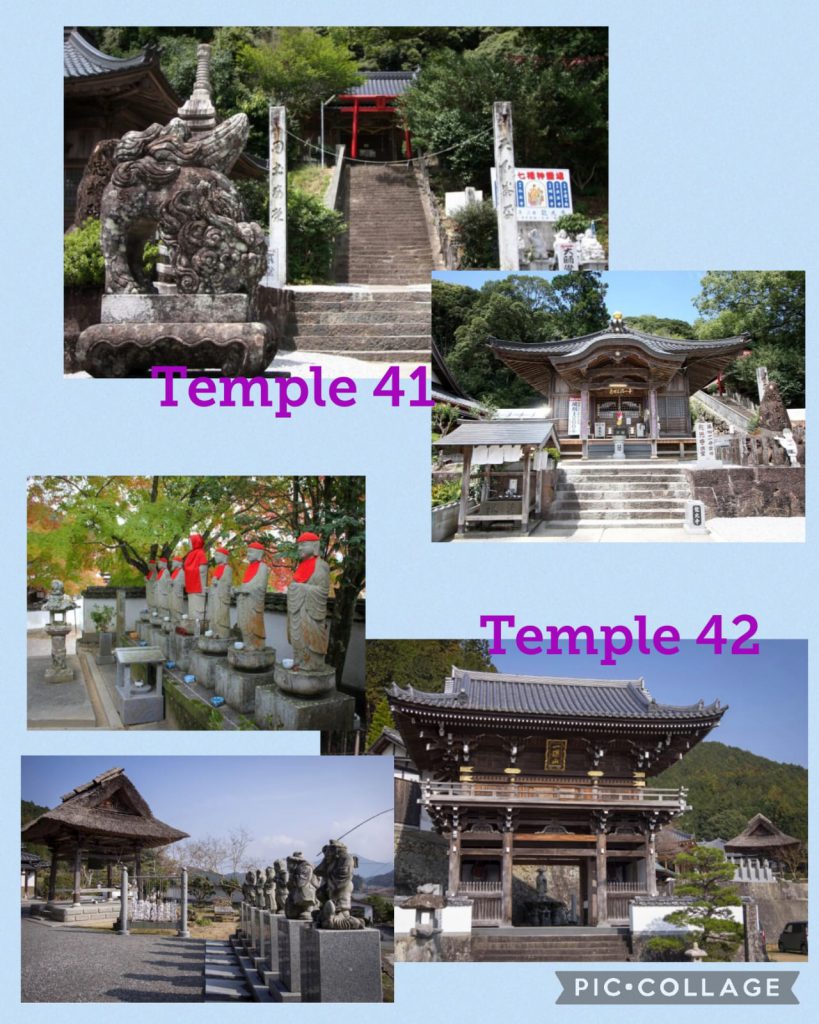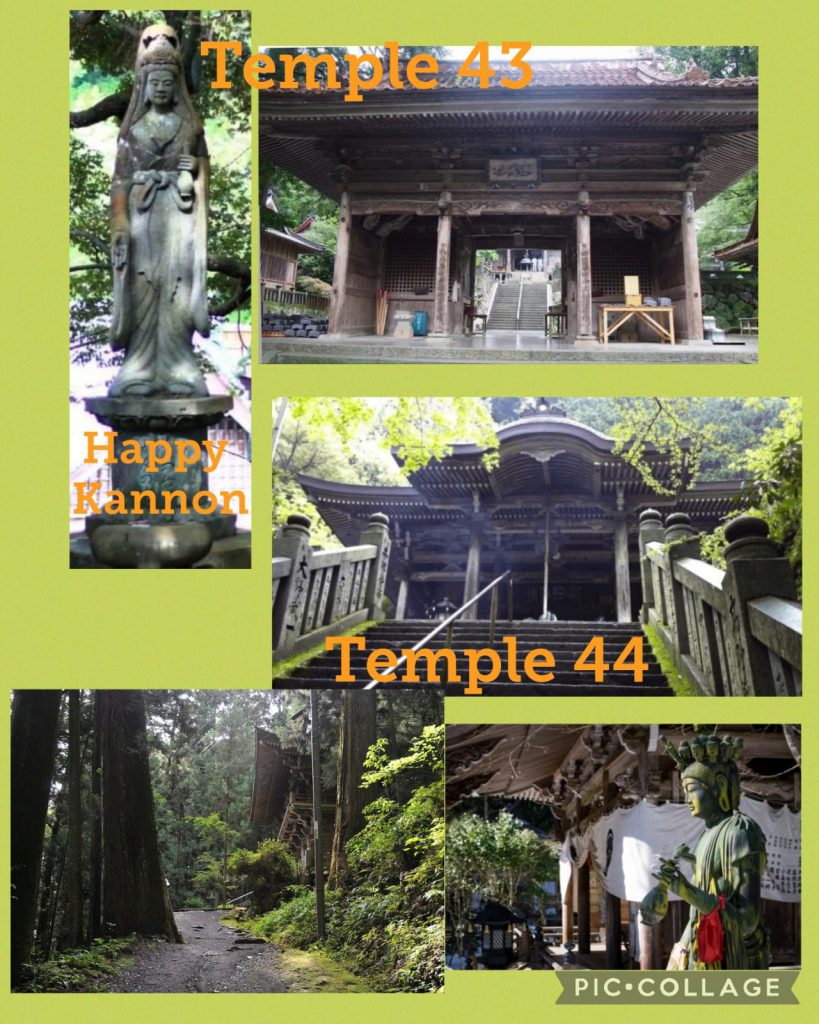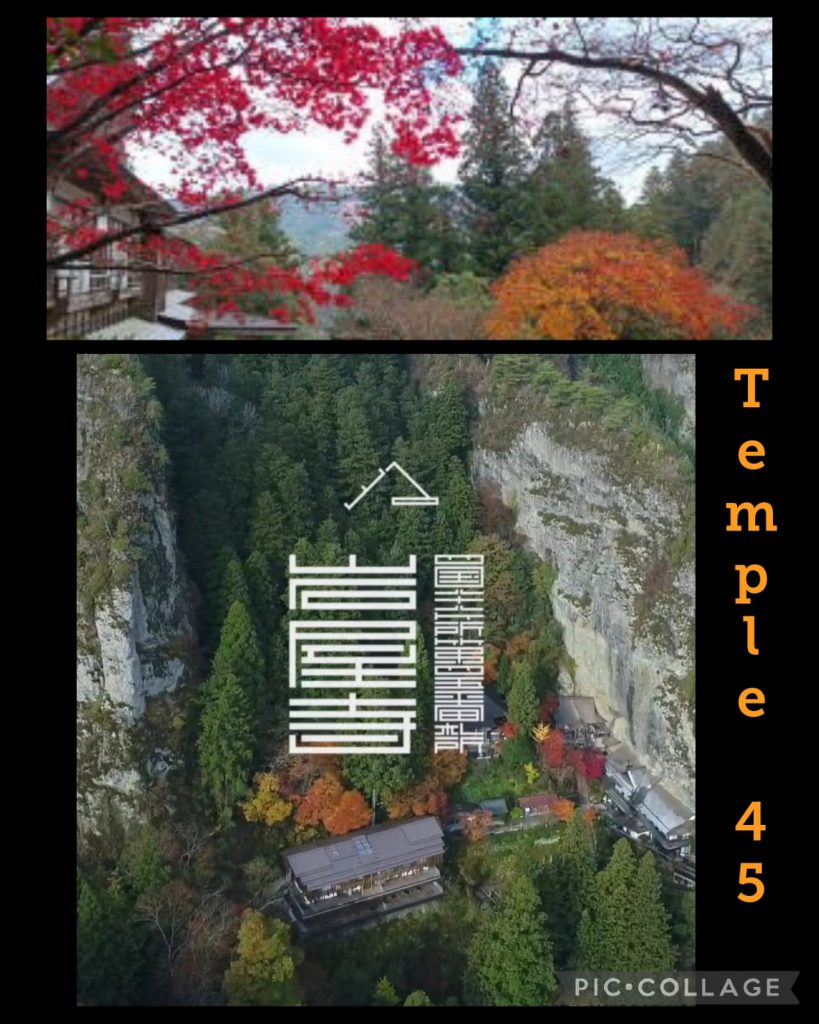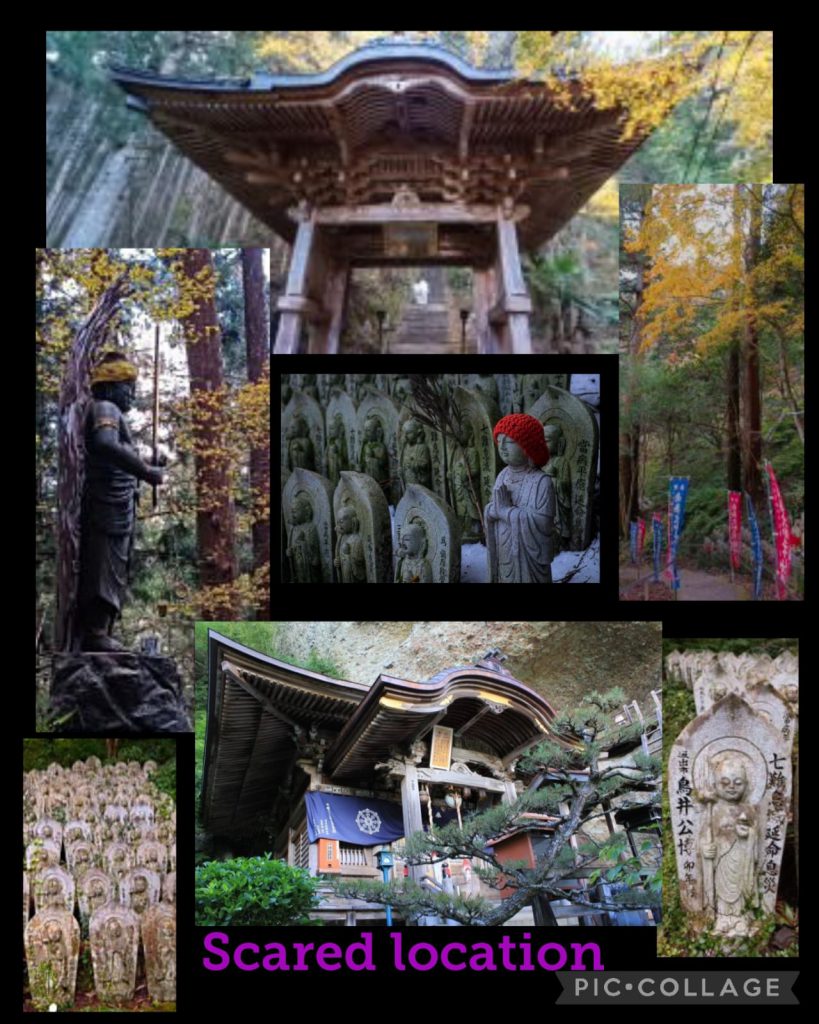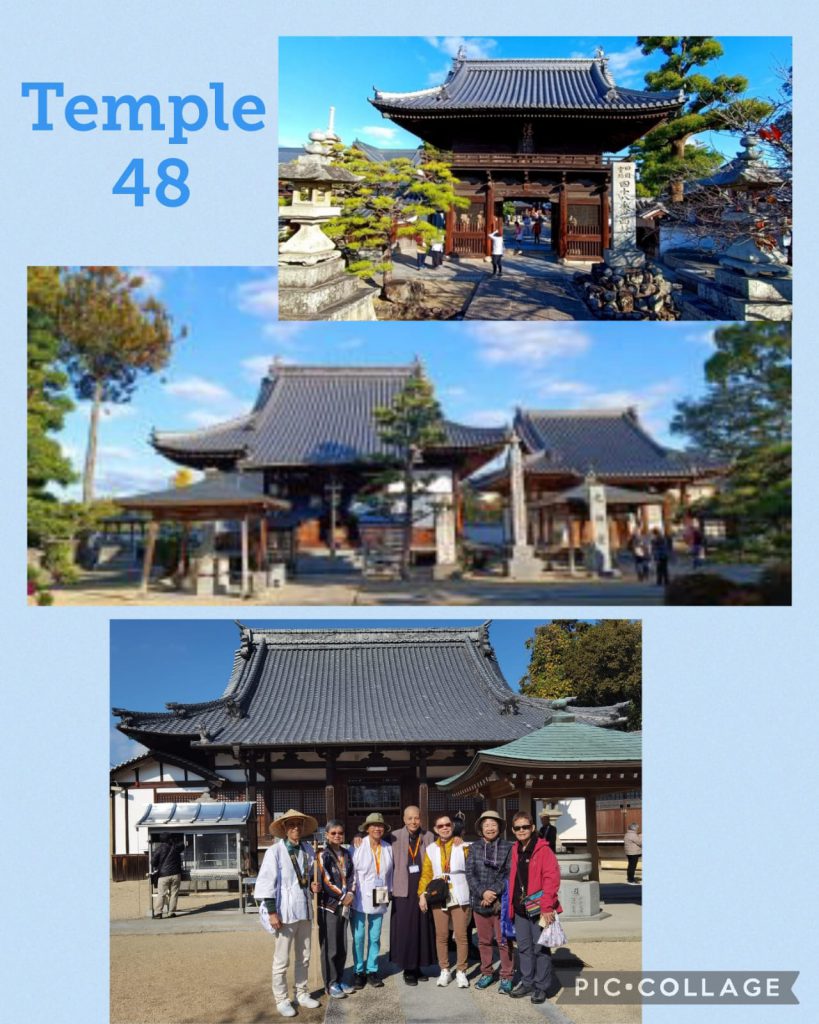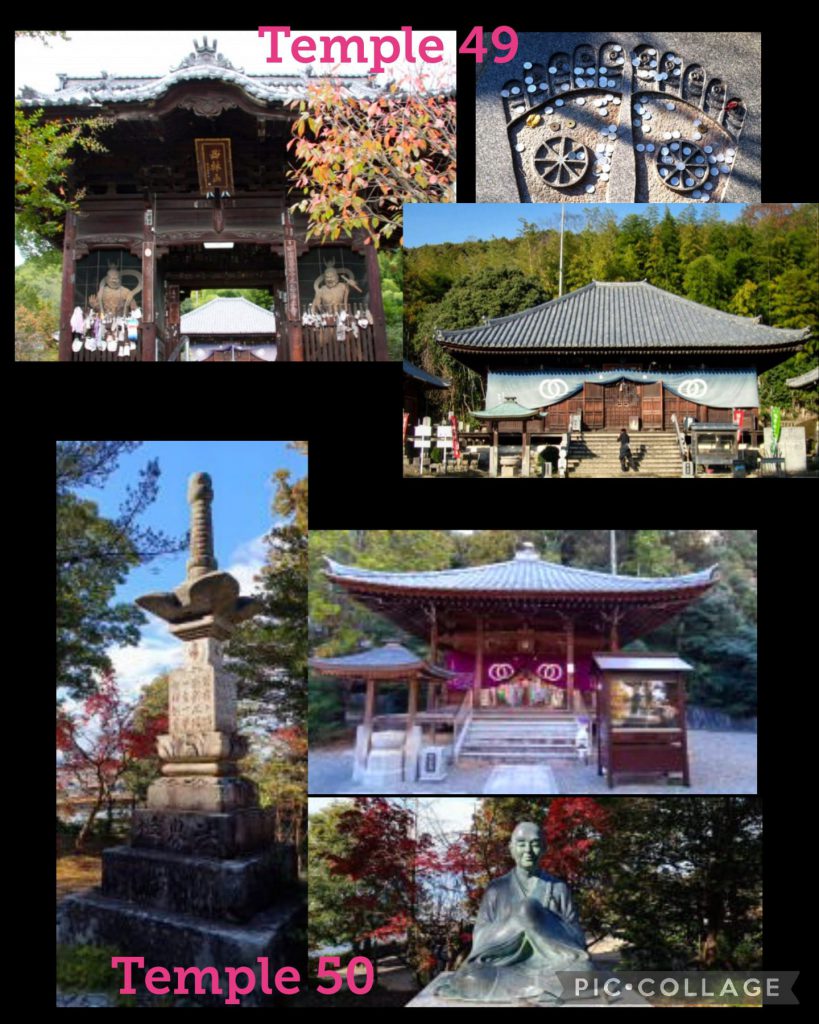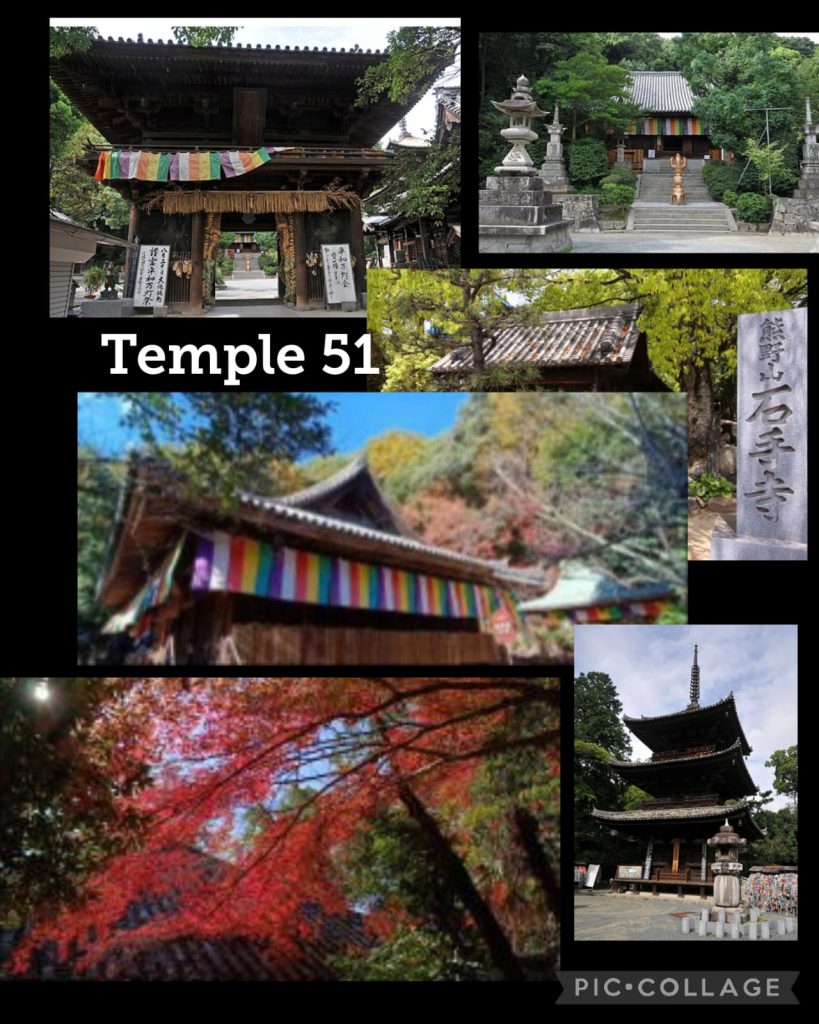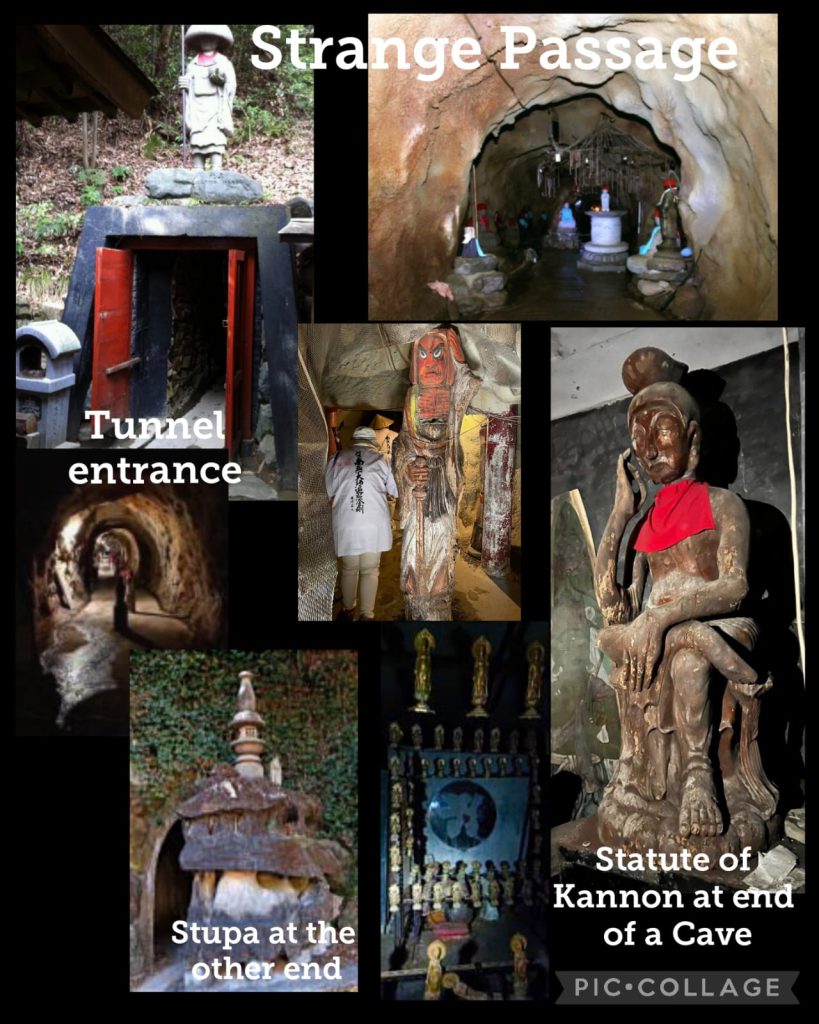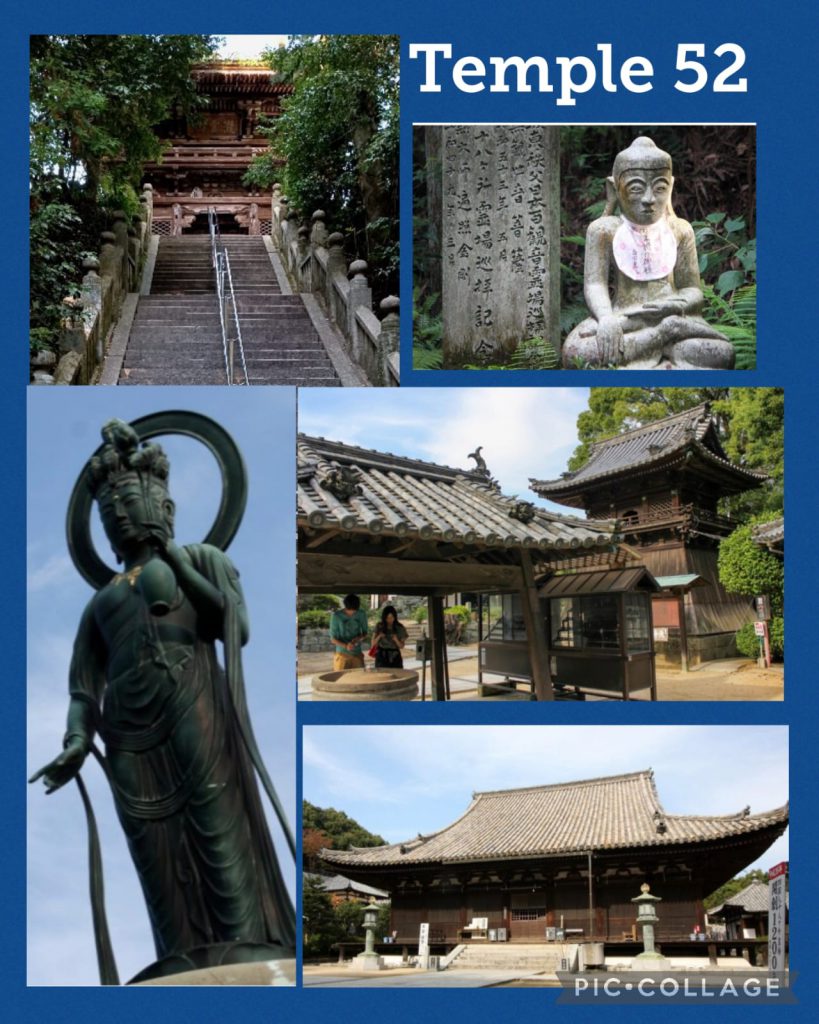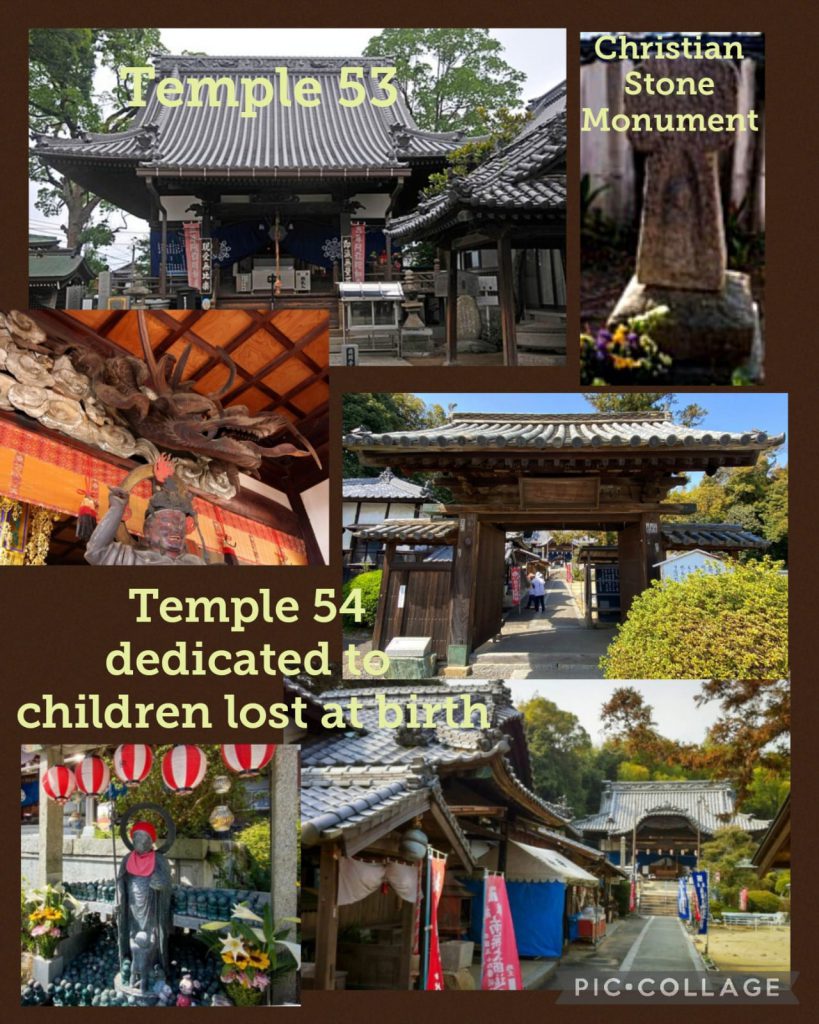November 23 Thursday Temples 37- 40 (4 temples)
Today we visited only four temples as they are far apart. We started with Temple 37 Iwamoto-ji (岩本寺) (deity-Fudo Myoo, Kannon Bosatsu, Amida Nyorai, Yakushi Nyorai and Jizo Bosatsu); then drove 82 km to reach Temple 38 Kongofuku-ji (金剛福寺) (deity-Senju Kannon). This is the longest stretch between two temples on the Shikoku pilgrimage that requires physical and spiritual endurance required by pilgrims in the old days. The last temple of the “Ascetic Training” section is Temple 39 Enkoji (延光寺) (deity – Yakushi Nyorai).
I find Temple 37 arty. The ceiling of the main hall rebuilt in 1978, is fitted with 575 paintings collected around Japan. The temple headed by a young monk has been experimenting with art and meditation projects. I saw some interesting art installations. Temple 38 overlooking the Pacific Ocean at the tip of the Ashizuri Peninsula looks grand with a photogenic garden with impressive colourful stones, a large pond, pagoda, shrines and pine trees. We walked quickly to the viewing platform of Cape Ashizuri the southernmost point of Shikoku. The views of the ocean, clear blue water, beautiful coastline with rocks and sea cliffs are stunning. Temple 39 has a legendary ‘eye wash well’ and a stone statute of a red turtle. We all found the foliage in the precinct awesome and enchanting.
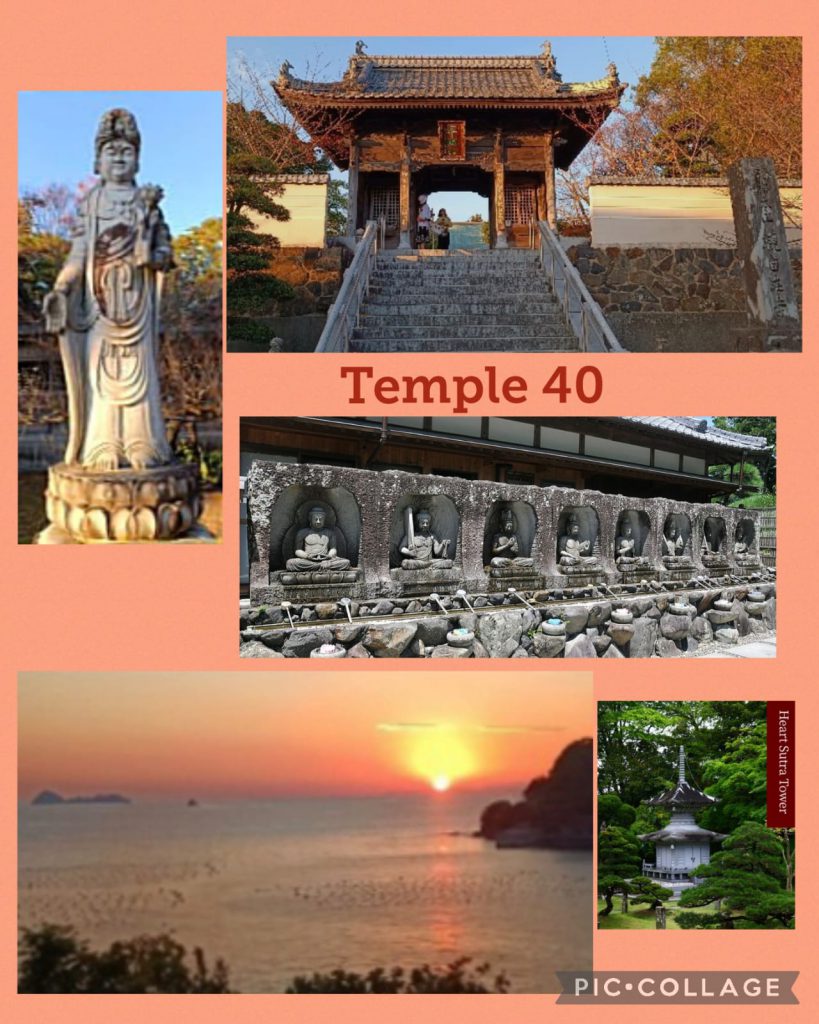
Ehime Prefecture “Enlightenment” Temples 40 – 65
We crossed into Ehime Prefecture to visit Temple 40 Kanjizai-ji (観自在寺) (deity-Yakushi Nyorai) which is the first temple of the ‘Enlightenment” section. We had a long driving day and were rewarded with a wonderful dinner in an Italian restaurant before checking in the JR Clement Hotel Uwajima.
November 24 Friday Temples 41-47 (7)
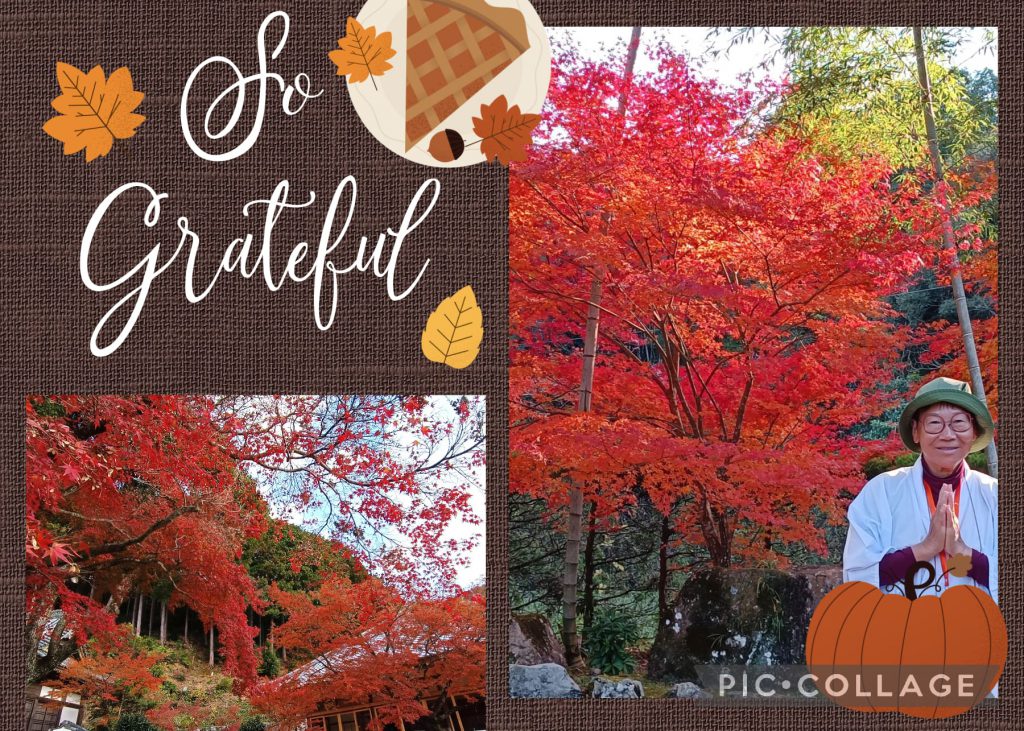
Today, we visited Temples 41 Ryuukou-ji (竜光寺) (deity-Juichimen Kannon); 42 Butsumoku-ji (佛木寺) (deity- Dainichi Nyorai); 43 Meiseki-ji (明石寺) (deity- Senju Kannon); 44 Daiho-ji (大宝寺) (deity-Juichimen Kannon), 45 Iwaya-ji (岩屋寺) (deity- Fudo Myoo); 46 Joruri-ji (浄瑠璃寺) (deity-Yakushi Nyorai) and 47 Yasaka-ji (八坂寺) (Amida Nyorai).
Highlight of the day or in the Ehime Prefecture was Temple 45. Located on Kuma Highland in a gorge formed of conglomerate rock and at an altitude of 585m, the temple surrounded by rocky cliffs and primeval mossy forests of sawtooth oak is unearthly beautiful, spiritual and inspiring. The Nio Gate was imposing. The path is lined with gigantic old oak trees. There are countless stone Buddha statutes of Fudo Myoo and they are in serried rows from the area across a red bridge. The precincts are built against a cliff halls with a relatively small main hall and Daishi halls which were rebuilt in 1927 and 1920 respectively. There is a wood ladder on the right of the main hall. I was the last batch to reach the precincts as I walked very slowly taking photos and soaking in the ambiance. As I was in good conditions, I even managed to climb the ladder to the cave where the hermit Hokke practised. I was impressed by a new modern building (Henjokaku): completed in 2014, it provides accommodation for pilgrims and space for various activities including meditation. I find the mountain spiritual and would like to return one day to stay in the Henjokaku, go into the mountain and reach the inner sanctuary.
Tonight, we stayed at a hot spring hotel in Matsuyama near the Dogo Onsen, one of the three most famous and oldest hot springs in Japan. I had a lovely relaxing time at the hotel onsen.
November 25 Saturday Temples 48-54 (7)
We visited Temples 48 Sairin-ji (西林寺) (deity – Juichimen Kannon); 49 Jodo-ji (浄土寺) (deity – Shaka Nyorai); 50 Hanta-ji (繁多寺) (deity – Yakushi Nyorai); 51 Ishite-ji (石手寺) (deity – Yakushi Nyorai ); 52 Taisan-ji (太山寺) (deity – Juichimen Kannon); 53 Enmyo-ji (圓明寺) (Amida Nyorai); and 54 Enmei-ji (延命寺) (deity – Fudo Myoo). Tonight we stayed at the Imabari Kokusai Hotel with a nice onsen for two nights.
Temple 51 with an approach in the form of a corridor lined with stores selling souvenirs, is interesting. The layout of the temple is in the style of the Kamakura period (1185-1333). The Nio Gate built in 1318 (measuring 7m high, 4m wide and 3m wide) is a National Treasure. The main hall, three-storied pagoda, a five-ring pagoda, bell tower, a bronze bell said to be the oldest in the prefecture, the Gomado and Kariteimotendo are National Important Cultural Properties. The temple associated with Emon Saburo who is said to be the first pilgrim, has a museum that boasts the largest collection of cultural assets amongst the 88 temples. In addition to the standard conventional structures, there is doorway to a dark hole in the mountain. We explored taking a tunnel-path to the other which has a stupa. Taking the same path back, we discovered a path to the right near the entrance. So we continued our exploration that led us to a small cave with a large sitting Kannon and many statutes big and small lined up on the wall and floor. A weird feeling!
We had a wonderful dinner in a nice restaurant and ended the lovely day with Patrick’s beautiful singing. We drove a short distance to the Imabari Kokusai Hotel where we stayed two nights. The hotel’s onsen is excellent.


